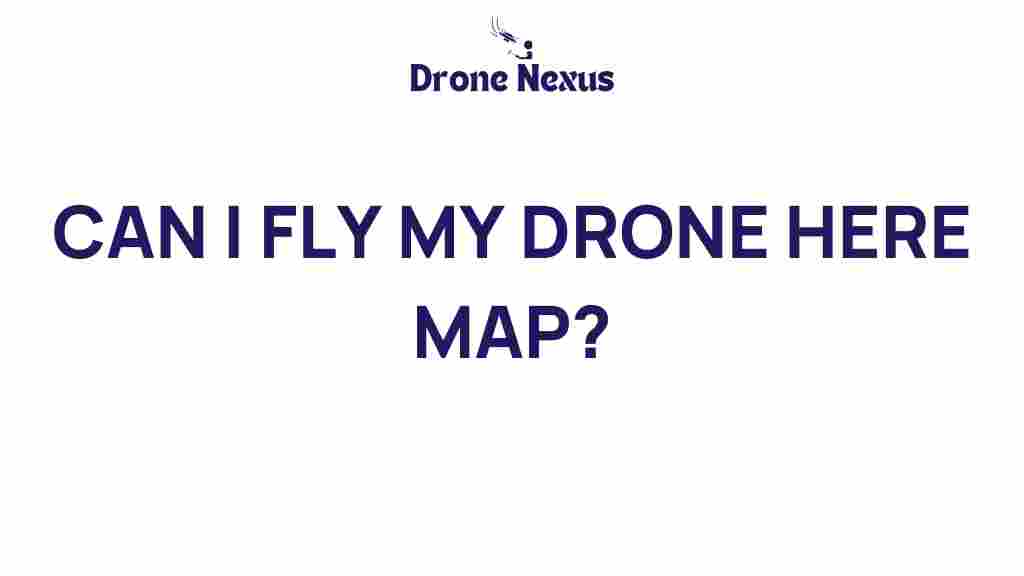Drone Regulations: Understanding the ‘Can I Fly My Drone Here’ Map
As drone technology continues to evolve, so does the regulatory framework surrounding it. For both hobbyists and professionals, understanding drone regulations is crucial to ensure safe and compliant flying. One of the most useful tools in navigating these regulations is the ‘Can I Fly My Drone Here’ map, which provides real-time information about where and when you can fly your drone. This article will delve into how to effectively use this map and ensure that you are flying within legal boundaries.
What is the ‘Can I Fly My Drone Here’ Map?
The ‘Can I Fly My Drone Here’ map is an interactive tool provided by the Federal Aviation Administration (FAA) that helps drone operators understand the airspace regulations in their area. The map allows users to identify:
- Restricted areas
- Controlled airspace
- Temporary flight restrictions
- Altitude limits
By using this map, drone operators can avoid potential legal issues and fly safely without disrupting other aircraft or violating drone regulations.
How to Use the ‘Can I Fly My Drone Here’ Map
Using the ‘Can I Fly My Drone Here’ map is a straightforward process. Follow these steps to ensure you’re aware of the regulations that apply to your location:
Step 1: Access the Map
To start, visit the official FAA website or search for the ‘Can I Fly My Drone Here’ map. The map is easily accessible and user-friendly, designed to cater to both novice and experienced drone operators.
Step 2: Enter Your Location
Once the map is open, you can either:
- Type your address in the search bar
- Zoom in and click on your location on the map
This will help you see the specific regulations that apply to that area.
Step 3: Analyze the Map Details
The map will display various zones, each with different colors indicating their specific regulations:
- Green Zones: Generally safe for flying, but check for any local regulations.
- Yellow Zones: Controlled airspace; you may need authorization to fly.
- Red Zones: No-fly zones; flying here is prohibited.
Clicking on these zones will provide additional details about the regulations in that area.
Step 4: Check for Temporary Flight Restrictions (TFRs)
In addition to the permanent regulations, it’s important to check for any TFRs that may affect your flight. TFRs can be issued for various reasons, including:
- Emergency situations
- Special events
- Military operations
Always ensure that your planned flying time does not coincide with any active TFRs.
Why Understanding Drone Regulations is Essential
Understanding drone regulations is not just about compliance; it is about safety. Here are some reasons why it’s crucial:
- Preventing Accidents: Knowing where you can fly helps avoid collisions with other aircraft.
- Avoiding Legal Issues: Flying in restricted areas can lead to hefty fines or other legal consequences.
- Contributing to Safety: By following regulations, you contribute to safer skies for everyone.
Troubleshooting Common Issues
While using the ‘Can I Fly My Drone Here’ map is generally straightforward, you may encounter some common issues. Here are some troubleshooting tips:
Issue 1: Map Not Loading
If the map fails to load, try the following:
- Check your internet connection.
- Try accessing the map from a different browser or device.
- Clear your browser’s cache and cookies.
Issue 2: Confusing Map Colors
Understanding the color codes can be tricky. If you’re unsure:
- Refer to the legend or key provided on the map.
- Consult the FAA guidelines for detailed explanations of different zones.
Issue 3: Unclear TFR Information
If you have difficulty finding TFR information:
- Check the FAA’s NOTAM (Notice to Airmen) system for real-time updates.
- Contact local aviation authorities for clarification.
Staying Updated on Drone Regulations
Drone regulations are constantly evolving to adapt to new technologies and threats. Here are some ways to stay informed:
- Follow the FAA: Subscribe to updates from the FAA for the latest regulations and advisories.
- Join Local Drone Communities: Participate in online forums or local groups to share tips and updates.
- Read Industry Blogs: Websites like DroneBlog offer insights into the latest news and regulations.
Conclusion
Utilizing the ‘Can I Fly My Drone Here’ map is an essential skill for any drone operator. By familiarizing yourself with drone regulations, you can ensure safe flying practices while avoiding potential legal pitfalls. Remember to always check the map before your flight and stay updated on any changes in regulations. By doing so, you contribute to a safer and more responsible drone community.
For more information on drone regulations and best practices, check out the FAA’s official website or your local aviation authority.
This article is in the category Applications and created by DroneNexus Team
